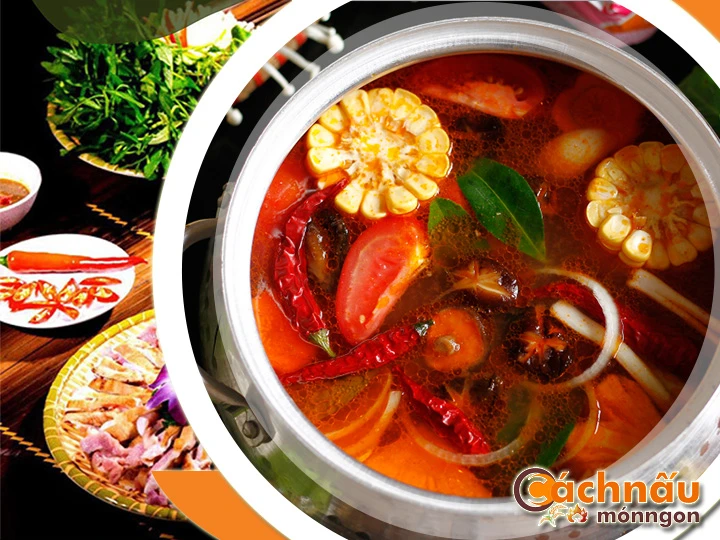Discover the Authentic Rabbit Hot Pot Ideas at Home - Lẩu thỏ
Discover the Authentic Rabbit Hot Pot Ideas at Home - Lẩu thỏ
Blog Article
Hot pot rabbit, a scrumptious and traditional delicacy, has been revered across multiple cultures and locales for centuries.

This comprehensive guide explores every part you need to understand about rabbit hot pot, from its culinary heritage to updated recipes, wellness benefits, and cooking directions for creating the flawless recipe at home. Whether you are a seasoned chef or a inquisitive newcomer, this guide will encourage and guide you to excel in the technique of rabbit hot pot.
DISCOVERING THE PAST ALONG WITH CULTURAL ASPECTS CONCERNING {BRAISED RABBIT DISH|HEARTY RABBIT MEAL|RABBIT HOT POT|RABBIT STEW|BUNNY CASSEROLE|RABBIT CUISINE|STEWED RABBIT
Rabbit hot pot acts as a exceptional and classic dish with meaningful heritage in various regions. Its admiration stems not only from its hearty flavor but also from its past and cultural importance.
Rabbit hot pot serves as a one-of-a-kind and traditional dish with profound cultural connections in many areas. Its renown stems not only from its savory flavor but also from its past and cultural importance.
- The Start: Rabbit stew started in agricultural regions where bunnies were a plentiful, nutritious food source. In ancient times in China, it was a household staple, particularly during cultural gatherings.
- Spread Through Regions: In Western regions like France, rabbit was commonly found in stews, adapting into modern versions of rabbit casserole as the dish spread across cultures.
2. Rabbit Stew throughout Cultural Practices of East Asia.
- China: Known as the traditional rabbit hot pot, rabbit hot pot is popular in Sichuan cuisine, admired for its fiery flavors and commonly shared during family gatherings.
- Throughout Korea and Japan: While less frequent, rabbit hot pot is rarely created as a therapeutic meal in Korea, or based on nabemono cuisine in Japanese cuisine, blending with local produce and condiments.
- Throughout Vietnam: Although rabbit hot pot is uncommon in everyday meals, it is appreciated during unique moments or in rural areas where rabbit meat is easily found. It is often prepared with distinctive spices such as citronella, fresh ginger, and red chili, paired with fresh vegetables like water spinach, mustard leaves, or sensitive plant. This dish is favored for its exceptional taste and nutritional richness, frequently enjoyed during special moments with close ones.
Tại Việt Nam, tuy không thực sự là món ăn dễ tìm hằng ngày, nhưng được biết đến trong những dịp đặc biệt hoặc ở các vùng xa xôi, nơi thịt thỏ dồi dào. Thường được tẩm ướp với các loại gia vị như sả, vị cay từ gừng, và ớt cay, kết hợp với rau sạch như rau sống khác. Món ăn này rất được ưa chuộng nhờ vị ngon đặc biệt và dinh dưỡng dồi dào, thường xuất hiện phổ biến ở buổi gặp mặt ấm cúng.
3. Rabbit Hot Pot in Western Food Culture.
- Throughout France: Typically cooked as a rich stew with red wine, herbs like rosemary, and seasonal roots. Rabbit hot pot is a cherished recipe for festive feasts.
- Italy: The dish “Cacciatore”, featuring rabbit braised in tomatoes and wine, is a historical predecessor of hot pot-style rabbit dishes.
MASTERING RABBIT HOT POT: RECIPES AND METHODS
Rabbit hot pot is a adaptable dish that merges seasonal ingredients, flavorful broths, and specialized methods to create a filling and satisfying meal. Below are detailed insights into the core recipes and strategies to perfect rabbit hot pot.
Basic Recipe for Rabbit Hot Pot
* Required Ingredients:
- 1 whole rabbit (chopped into parts)
- 4 cups of broth (chicken)
- Vegetables (carrots)
- Spices and herbs (star anise)
- Seasonings (pepper)
- Optional: noodles for serving
* Method:
- Prepare the Rabbit: Clean and section the rabbit into pieces. Season with a pinch of salt, pepper, and a drizzle of soy sauce for half an hour to boost the flavor.
- Prepare the Broth: Heat a vessel with a small amount of oil. Sauté garlic and ginger until aromatic. Add your preferred broth and bring it to a light boil.
- Add the Rabbit: Add the rabbit pieces into the pot and let them cook slowly on a low flame for 30-40 minutes until tender.
- Incorporate Vegetables: Add your selected vegetables and cook until they are perfectly cooked but still bright.
- Serve: Transfer the hot pot to a serving dish. Serve with side dishes and extras like rice or noodles.
Techniques to Perfect Rabbit Hot Pot
- Seasoning:
. Marinate chế biến lẩu thỏ the rabbit with a combination of salt, pepper, and aromatics to intensify its original taste.
. For more depth, use soy sauce or a mix of fragrant herbs.
- Adding Ingredients Strategically:
. Start by boiling the rabbit in the broth to draw out its rich flavor.
. Introduce vegetables step by step based on their cooking times.
- Cooking Time:
. Avoid overcooking the rabbit, as it can become tough.
. Test for completion by checking if the meat falls off the bone.
- Flavor Enhancements:
. Fine-tune the broth by adding extra herbs as needed.
. Experiment with different types of broths, such as herbal-infused variations.
Tips for Success
- Choose Freshness: Always choose fresh rabbit meat and in-season greens for the top flavor.
- Taste and Adjust: Be mindful of the saltiness in the broth. Try and adjust frequently during cooking.
- Creative Accompaniments: Offer a variety of sauces like garlic-chili oil or soy-based dips to elevate the dining experience.
- Visual Appeal: Use a tabletop cooker or serve the hot pot as a focal point to foster interaction.
By mastering these cooking techniques, you can prepare a rabbit hot pot that’s both flavorful and visually appealing, making it a star attraction for any gathering or dining experience.
Report this page
